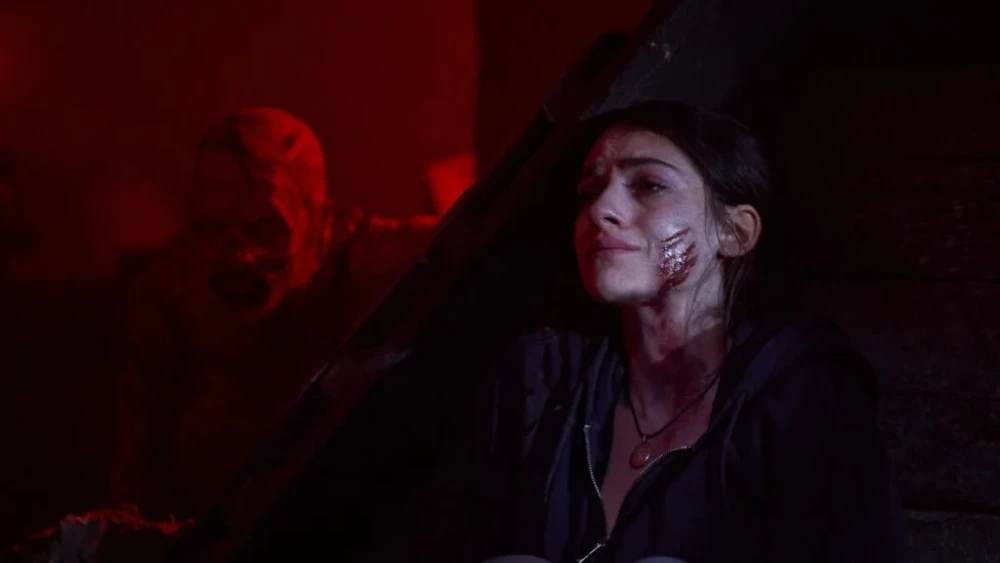Celebrity Fan Web – About 15 minutes into Until Dawn, a creepy petrol station clerk warns the teens, “a lot go missing further down the roads.” This instantly sets a foreboding tone. The teens head toward a forest cabin, evoking the classic “Cabin in the Woods” vibe. The premise feels familiar but holds potential for inventive horror. The original PlayStation game thrived on player choice, letting players decide who lives or dies. This mechanic created tense, engaging gameplay. The film, however, abandons that structure entirely. Instead, it introduces a Groundhog Day-style loop where survival until sunrise is the only way out. This concept offers fresh potential but ultimately falls short. The film leans heavily on typical horror clichés rather than exploring its unique premise.
“Also Read: Osaka Expresses Frustration After Tough Loss to Badosa”
Diverging from the Game’s Strengths: Loss of Player Agency
Until Dawn’s film adaptation strips away the game’s defining feature: player choice. The game challenges players to make decisions that affect outcomes. This creates suspense and emotional investment. In contrast, the film offers a linear story with no choices or consequences for viewers. The Groundhog Day loop, where each night resets the horror, sounds intriguing. But the film quickly falls into predictable patterns. It relies on standard horror elements: a knife-wielding killer, a witch, and even the game’s Wendigos. Unfortunately, these creatures lack depth and scare power. The film recycles familiar horror tropes without adding fresh twists. This reliance on cliché undermines the creative potential of the looping nightmare concept. Instead of elevating the story, it feels stuck in safe, generic territory.
Moments of Creativity Drowned by Serious Tone
There are brief moments when the film hints at originality. A creatively staged bathroom explosion scene stands out. It injects tension and a sense of unpredictability. A found-footage montage offers a glimpse of innovative storytelling. Unfortunately, these moments are few and short-lived. The film quickly retreats to conventional horror scenes. Its serious tone hampers the ability to have fun with the story. Unlike the game’s occasional tongue-in-cheek moments, the movie never winks at the audience. This lack of levity makes the horror feel flat rather than thrilling. The film misses opportunities to balance scares with clever storytelling. As a result, it leaves viewers waiting for a payoff that never arrives.
Direction and Performances: Efforts That Don’t Fully Land
Director David F. Sandberg, known for delivering effective scares in Lights Out and Annabelle: Creation, shows skill here. Several scenes build genuine tension and suspense. Sandberg’s experience helps the film avoid complete disaster. The cast also does what they can with limited material. Ji-young Yoo as Megan, the group’s psychic, brings energy and presence to her role. She seems to enjoy the part more than others. Peter Stormare reprises his game character, Dr. Alan J. Hill, and brings intensity to his scenes. Yet, his role feels underwritten and disconnected from the plot. The supporting cast struggles to elevate their thinly drawn characters. Their performances highlight the script’s shortcomings rather than compensate for them.
Narrative Shortcomings: Confusing Plot and Missed Character Development
The film’s plot leaves many questions unanswered and threads abandoned. The reasons behind the supernatural events remain unclear. A third-act monologue attempts to explain things but only adds confusion. Key character arcs, like Megan’s psychic powers and Clover’s bond with her sister, receive little resolution. Emotional connections established earlier are forgotten by the climax. What should have been a complex, twisty horror ride feels rushed and incomplete. The story builds toward a climax that never delivers the promised tension or surprises. Ultimately, Until Dawn’s live-action adaptation feels like a missed opportunity. It had a solid foundation but failed to capture the game’s spirit or innovate enough on its own.
